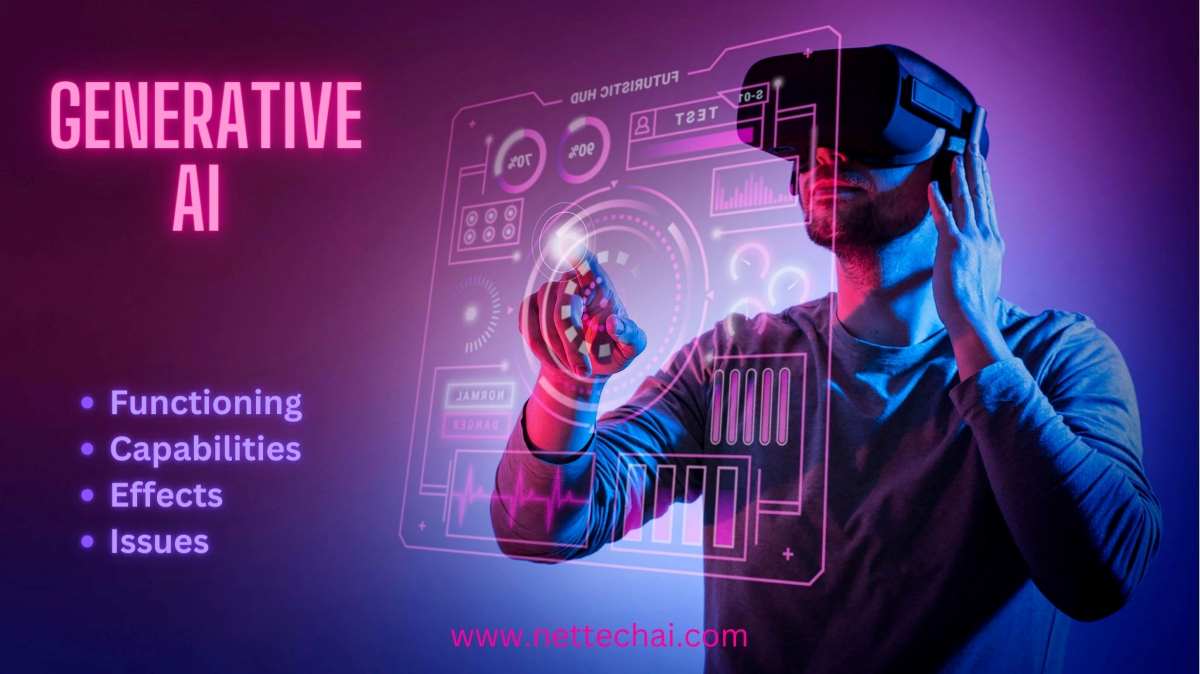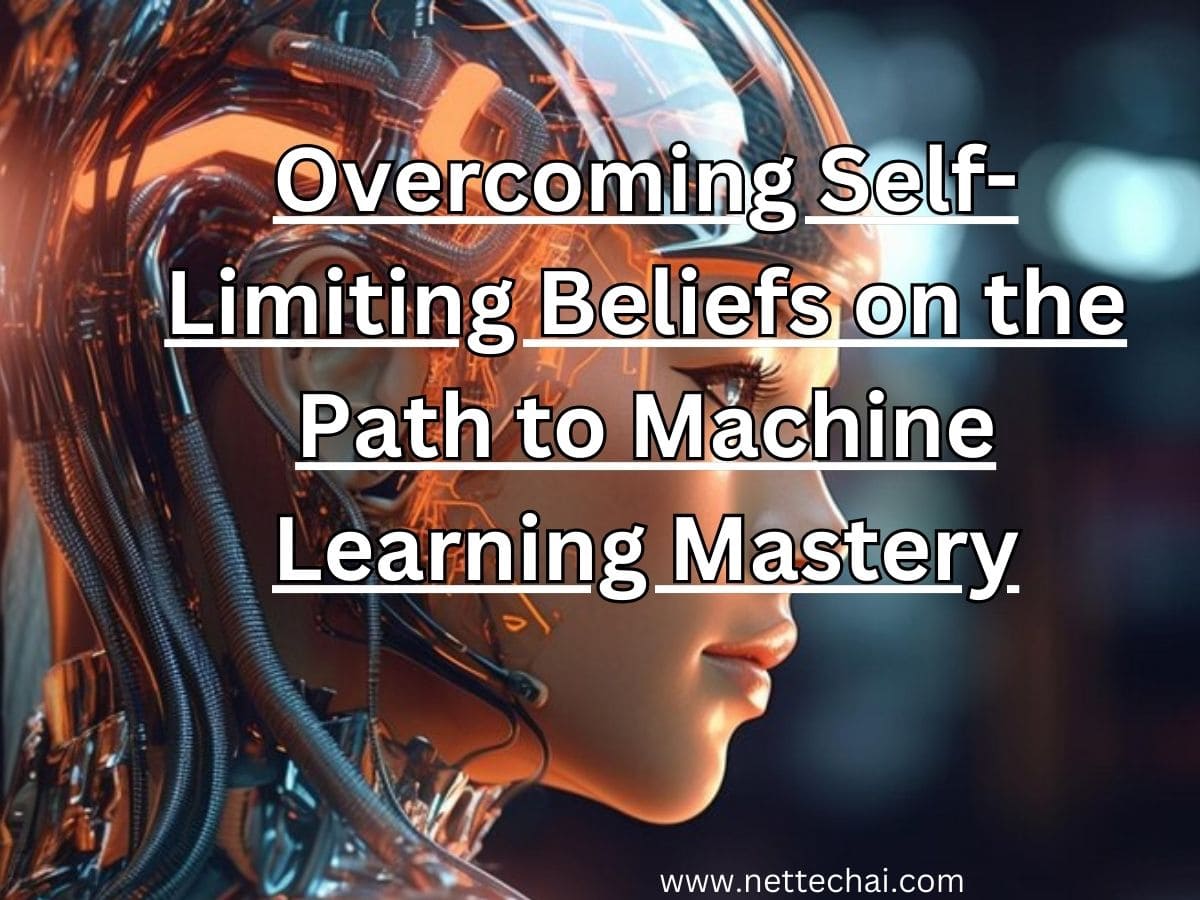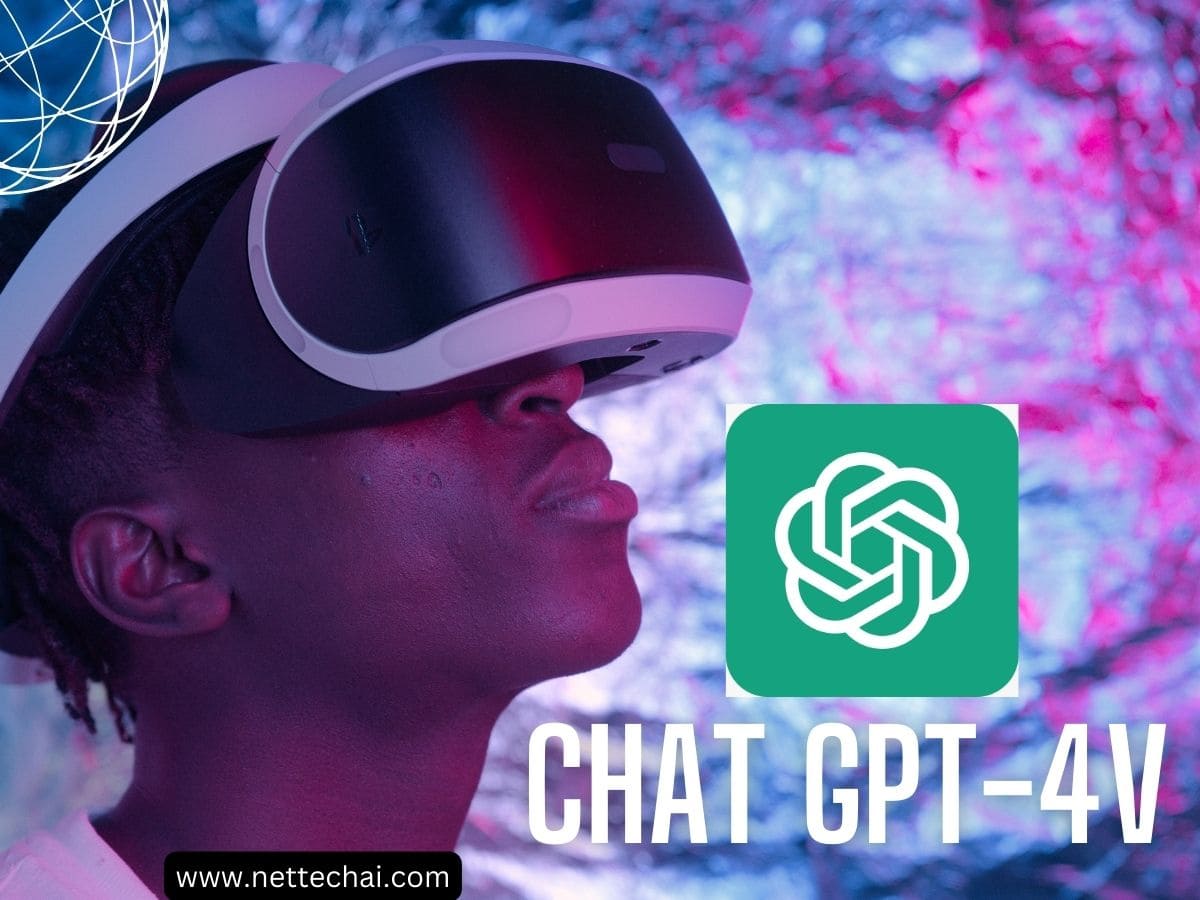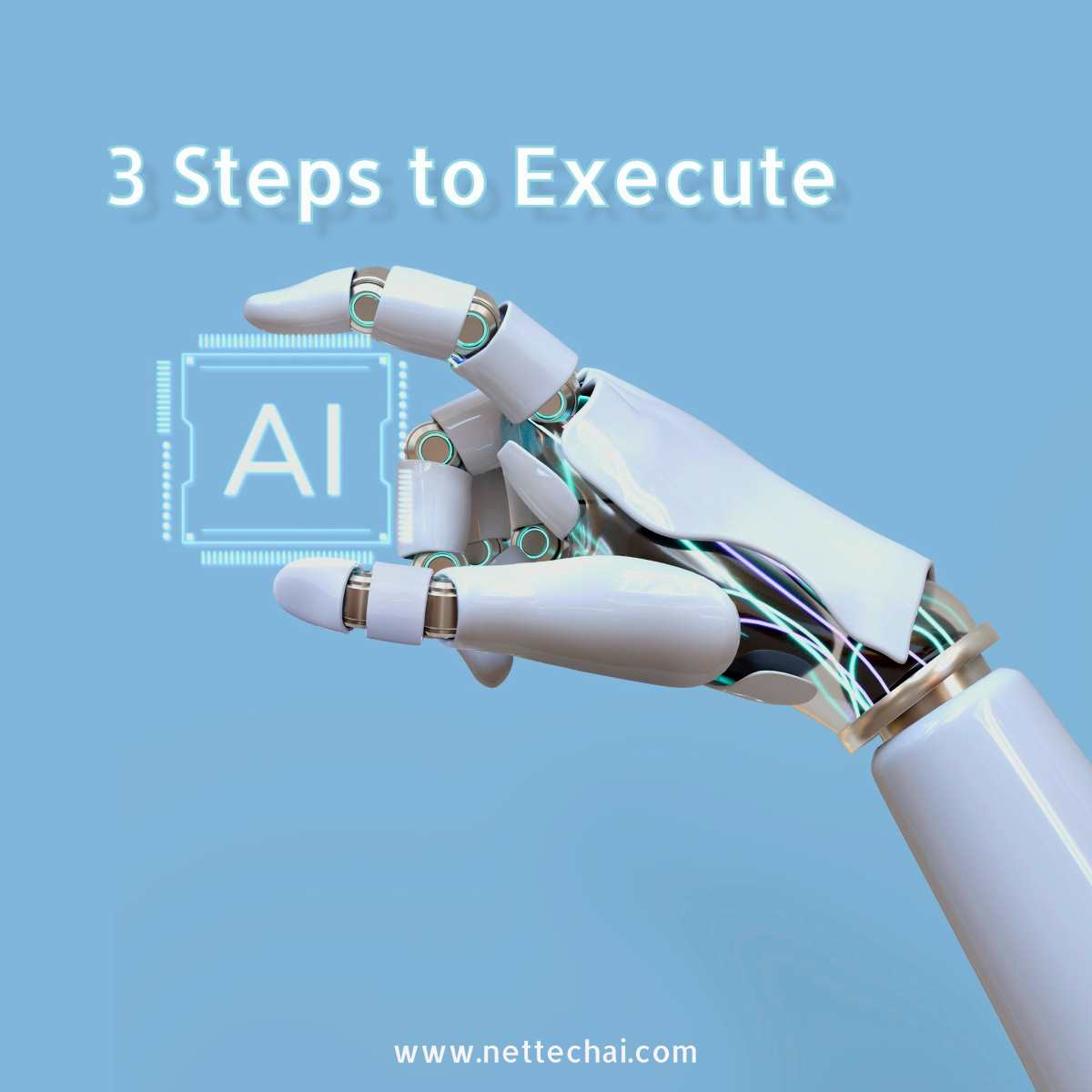Generative Ai computer-based intelligence stands separated from other artificial intelligence structures, similar to calculations zeroing in on design acknowledgment and forecasts, because of its novel capacity to make completely new and unique substance. At the point when given an essential message, picture, or sound brief, generative artificial intelligence quickly produces different substance, whether it’s a new paper examining stream down financial matters, a craftsmanship portraying New York in Monet’s style, or a rap about Reese Pieces.
Albeit this content shows up completely novel, it is established in broad preparation information gave to the generative man-made intelligence models. These models use brain organizations to perceive designs inside the information in view of likelihood circulations. This empowers them to make undifferentiated from designs, finishing in seemingly truly creative result.
Fundamentally, this new happy rises out of laid out rules and information gathered from existing sources, like documents of nineteenth century craftsmanship or tremendous all-encompassing data sets. Surprisingly, this interaction mirrors human mental capacities yet works at a fundamentally quicker pace.
This duality – the capacity to take advantage of centuries of human information in simple minutes – fills in as both a strength and a constraint. While generative man-made intelligence outfits a tremendous abundance of data, it likewise experiences limits that we will investigate in practically no time.
What are the capabilities of Generative AI?
Generative computer-based intelligence capably saddles the immense information got from terabytes of human information to recreate our imagination, accomplishing this accomplishment in a negligible portion of the time convincingly. As shown by ChatGPT, which north of 100 million clients have investigated, errands like creating sitcom scripts, recommending exceptional recipe turns, or producing site code can be achieved in practically no time.
ChatGPT, an unmistakable illustration of generative simulated intelligence, is joined by other creative models like DALL-E, which specialties pictures from explicit prompts, conjuring situations as different as a raccoon playing tennis at Wimbledon during the 1990s. Generative artificial intelligence expands its abilities past text and pictures, wandering into the domains of sound and video. For example, it can manufacture scenes like Won’t Smith enjoying spaghetti he ever really ate or make trailers for fictitious films, for example, “The Incomparable Catspy.” Albeit these manifestations could as of now show minor flaws, continuous endeavors by industry goliaths like Meta and Google in text-to-video innovation guarantee fast upgrades.
In the music space, generative artificial intelligence delivered “Heart on My Sleeve,” apparently a cooperation between stars Drake and the Weeknd, despite the fact that it’s simply the man-made intelligence mirroring their sound styles. In spite of its imaginative ability, this innovation faces difficulties. For example, all inclusive Music Gathering quickly eliminated the man-made intelligence produced track from streaming stages because of copyright concerns.
While these models could seem capricious, they highlight the massive capability of generative artificial intelligence. It as of now imitates human managerial and innovative results with exceptional devotion, a pattern set to heighten with additional progressions. In any case, these advancements are not without their dangers, igniting continuous conversations about the moral ramifications and limits of this state of the art innovation.
How might Generative AI affect people?
Generative simulated intelligence can possibly fundamentally improve efficiency for organizations, states, and public administrations, according to McKinsey research gauges, extending an incredible expansion of up to $4.4 trillion to the worldwide economy yearly. Notwithstanding, approaching over this potential advancement are significant worries with respect to the removal of human specialists. This innovation doesn’t restrict itself to imaginative areas; it holds the ability to supplant experts in fields traversing regulation, money, training, and designing.
In the most hopeful situation, man-made intelligence could productively deal with commonplace assignments, opening up HR to handle difficulties that computerized reasoning has not yet dominated. However, this optimistic vision conflicts with the brutal truth of cost-cutting aspirations in the business world. Early signs propose that a few managers see embracing generative Ai computer based intelligence as a potential chance to decrease their labor force without compromising result.
Furthermore, taking into account the law of potentially negative side-effects, there are more conceptual issues at play. For example, tech goliaths like Google and Microsoft are exploring different avenues regarding chatbots summing up site content without the requirement for client clicks. While this approach goes for the gold, it could prompt a decrease in promotion income for the source destinations, possibly compelling them to close down. This risks human work as well as denies web search tools of significant, exceptional information, affecting their capacity to learn and develop actually from now on.
What are different issues with Generative Artificial Intelligence?
Generative man-made intelligence carries with it a huge number of difficulties, stretching out past the potential employment misfortunes it could cause. One major problem is the inescapable issue of human predisposition, a test looked by numerous man-made intelligence fields. Generative AI gain from human-created preparing information, which frequently reflects authentic inclinations. For example, whenever entrusted with making a picture of a specialist, the computer based intelligence could default to portraying a white, male doctor because of well established predispositions established in notable sexism and prejudice.
Associated with this challenge is the intrinsic impediment of generative artificial intelligence to deliver truly creative substance. While it can join various features of human encounters in clever ways, it comes up short on natural human flash of imagination that has prodded endless leap forwards from the beginning of time. An unexpected curve happens when generative simulated intelligence creates misleading data, a peculiarity known as mind flights, which, when taken as truth, can prompt critical outcomes. For example, ChatGPT once manufactured legal suppositions and legitimate references, bringing about lawful fines for the people who depended on its mistaken data.
Moral and legitimate issues additionally plague the universe of generative man-made intelligence, especially concerning counterfeiting and intellectual property regulation. Courts are at present wrestling with claims, as creators challenge the utilization of their works in preparing generative man-made intelligence models without unequivocal authorization. Besides, there’s a certified trepidation that pernicious entertainers could take advantage of generative simulated intelligence to disperse disinformation, discoloring people of note and foundations. This deception could appear as quickly created counterfeit news or computer based intelligence produced web-based entertainment profiles, creating far reaching turmoil and frenzy.
At long last, there’s the undercover ecological cost. The most common way of making and working generative simulated intelligence models leaves a monster carbon impression. Additionally, the consistent utilization of simulated intelligence applications forces a continuous natural weight. Research demonstrates that a basic 20-50 inquiry discussion with ChatGPT drinks roughly 500ml of water. When extrapolated to a great many clients every day, this use turns into a huge natural concern, especially in a world progressively burdened by dry spells.
What might the fate of Generative Artificial Intelligence at some point hold?
Accepting these difficulties can be survived or moderated, the capability of generative simulated intelligence becomes enormous, causing its sending to appear to be legitimate notwithstanding the substantial worries. Critical headway has previously been made in this field, with generative computer based intelligence exhibiting astounding effectiveness in quickly handling data and creating reactions. Besides, headways in man-made intelligence voice union are happening every day, prompting the advancement of devices for constant interpretation, sound naming, robotized portrayal, and melodic scores for film and television.
Much better is the possibility of generative artificial intelligence upgrading logical and clinical exploration by speeding up the pace of revelations. As per Brian Burke, Gartner’s examination VP for Innovation Development, generative man-made intelligence methods are supposed to assume a critical part in methodically finding over 30% of new medications and materials by 2025, a huge jump from the ongoing business as usual.
Gartner imagines generative Ai computer based intelligence reforming different areas, including material science, chip plan, engineered information, and parts configuration in assembling, car, aviation, and safeguard ventures. Looking further ahead, the imaginative enterprises could observer a change in perspective, with Gartner foreseeing that by 2030, artificial intelligence utilizing text-to-video procedures will produce 90% of blockbuster films, flagging a stupendous change in filmmaking.
Media outlets, especially computer games, stands to acquire significantly from generative artificial intelligence progressions. Whole universes could be created on-request founded on straightforward depictions, and game substance could turn out to be unfathomably more unique. In the domain of virtual and expanded reality, Meta (previously Facebook) is vigorously putting resources into man-made intelligence and the metaverse. Generative man-made intelligence devices are ready to assume a critical part in understanding Meta’s vision, working with far and wide reception of their imaginative ideas.
Last considerations Generative Ai
Generative computer based intelligence remains as an extraordinary power for mankind, provoking significant speculations from tech goliaths like Google, Meta, Microsoft, Nvidia, and Intel, with multibillion-dollar responsibilities. Nvidia’s Chief, Jensen Huang, has pronounced generative computer based intelligence as another figuring pattern, proclaiming the potential for a definitely unique world inside the following 10 to 20 years.
In any case, such progressive headways deliver huge difficulties, requiring a more critical look from administrative bodies before long. The results of these administrative endeavors will significantly impact the eventual fate of generative computer based intelligence, deciding if its far reaching reception turns into a turning point for humankind, a passing pattern, or in the middle between.








One thought on “What is Generative AI and how can it function?”
Comments are closed.